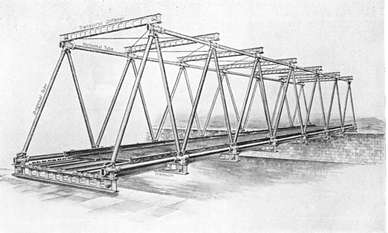
|
|
||||||||
Charles Edward Inglis
His most important contribution to engineering science was a treatise on the stresses in metal plates as a result of the presence of cracks. In 1914, at outbreak of war he was commissioned in the Royal Engineers and was appointed to the War Office where he was in charge of bridge design and supply. A bridge of his own design was adopted by the army.

The Inglis military bridge
After the war, Inglis returned to Cambridge and on 25 March 1919 was elected to the professorship made vacant by Hopkinson’s untimely death. He set about establishing an undergraduate school second to none. To aid this process, he set up a separate Board of Engineering Studies.
He was a gifted teacher and created a teaching institution of outstanding merit. He continued to pursue his own research interests and was awarded a Fellowship of the Royal Society in 1930. On reaching retiring age in 1940, he was pursuaded to stay on for an extra three years until John Baker took the chair in 1943.
